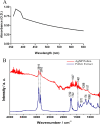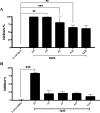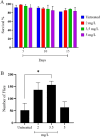Green synthesis of silver nanoparticle using pollen extract from Tetragonisca angustula a stingless bee
- PMID: 38801473
- PMCID: PMC11130103
- DOI: 10.1186/s11671-024-04038-0
Green synthesis of silver nanoparticle using pollen extract from Tetragonisca angustula a stingless bee
Abstract
This study explores the green synthesis of silver nanoparticles (AgNPs) using a methanolic extract of fermented pollen from Tetragonisca angustula, a species of stingless bees. The AgNPs exhibit spherical morphology, low charge values, and suspension stability, with their unique composition attributed to elements from the pollen extract. Antioxidant assays show comparable activity between the pollen extract and AgNPs, emphasizing the retention of antioxidant effects. The synthesized AgNPs demonstrate antimicrobial activity against multidrug-resistant bacteria, highlighting their potential in combating bacterial resistance. The AgNPs exhibit no toxic effects on Drosophila melanogaster and even enhance the hatching rate of eggs. The study underscores the innovative use of stingless bee pollen extract in green synthesis, offering insights into the varied applications of AgNPs in biomedicine.
Keywords: Antimicrobial; Nanoparticles; Stingless bees; Sustainable.
© 2024. The Author(s).
Conflict of interest statement
The authors declare no competing interests.
Figures






References
-
- Syafiuddin A, Salmiati, Salim MR, Beng Hong Kueh A, Hadibarata T, Nur H. A review of silver nanoparticles: research trends, global consumption, synthesis, properties, and future challenges. J Chin Chem Soc. 2017;64:732–756. doi: 10.1002/jccs.201700067. - DOI
Grants and funding
- APQ-02766-17/Fundação de Amparo à Pesquisa do Estado de Minas Gerais
- APQ-02766-17/Fundação de Amparo à Pesquisa do Estado de Minas Gerais
- CBB-APQ-03613-17/Fundação de Amparo à Pesquisa do Estado de Minas Gerais
- APQ-02766-17/Fundação de Amparo à Pesquisa do Estado de Minas Gerais
- APQ-02766-17/Fundação de Amparo à Pesquisa do Estado de Minas Gerais
LinkOut - more resources
Full Text Sources
Molecular Biology Databases
